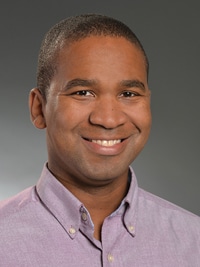
Virginia Head & Neck Surgeons – Leesburg
19455 Deerfield Ave.
Suite 301
Leesburg, VA 20176

More Hearing Health Articles
Communicating With Patients In Unprecedented Times
It has been said that we are living in “unprecedented times” due to COVID-19. Despite that, we still need to communicate vital information to our patients. Properly wearing face masks help to minimize the spread of the disease, but it also increases communication difficulties.
Masks attenuate speech in the high frequencies by 3-12 dB. The degradation of speech can have deleterious effects on communication. Although we cannot remove the physical barriers on our faces, there are ways in which we can metaphorically remove barriers to communicate effectively with our patients.
Regardless of the type of mask used, one simple measure that can be employed is to speak slower. Adults speak at an average of 160-200 words per minute (WPM). By slowing one’s speech to about 120 WPM (similar to American icon, Mr. Rogers) will help increase speech understanding.
Other measures that we can do to facilitate communication easier is to face the person when speaking with them. This ensures the patient is receiving the maximum amount of acoustic energy. Enhance your communication with visual references by using notes (common speaking points or images). You can also ask your patient if they understood what you said and request that they repeat certain information back to you. You can also repeat or rephrase what you say to your patients. If possible, one can use portable amplifiers to amplify their own voice for patients.
Finally, while complying with your institution’s guidelines (and other pertinent regulations) about the use of face covering, use a mask that has a transparent area where the mouth can be seen by the patient so that mouth and facial cues can be read by the patient.
If you suspect a patient may have hearing issues, refer them to an audiologist. An audiologist can assess, diagnose, and treat hearing loss. They can make the appropriate recommendations to help patients (or make the appropriate referral) communicate in their choice of modality (i.e. auditory/oral, American Sign Language, total communication, etc). Audiologists are also experts in digital hearing aid technology, cochlear implants, osseo-integrated devices, amplifiers, and communication strategies.
We are one team. Even though we are in unprecedented times, we will work in unprecedented ways to break down the walls that try to prevent us from communicating effectively with our patients.
Other Articles You May Find of Interest...
- Five Important Reasons To Schedule A Yearly Hearing Exam
- Difficulty Hearing Over The Phone?
- Hearing Loss and Your Overall Health
- Assistive Telecommunications Equipment Provided By the State
- Speech Disability and Using the Telephone
- Keeping Maryland Residents Connected
- Your Hearing, Diabetes and Cardio Health

















